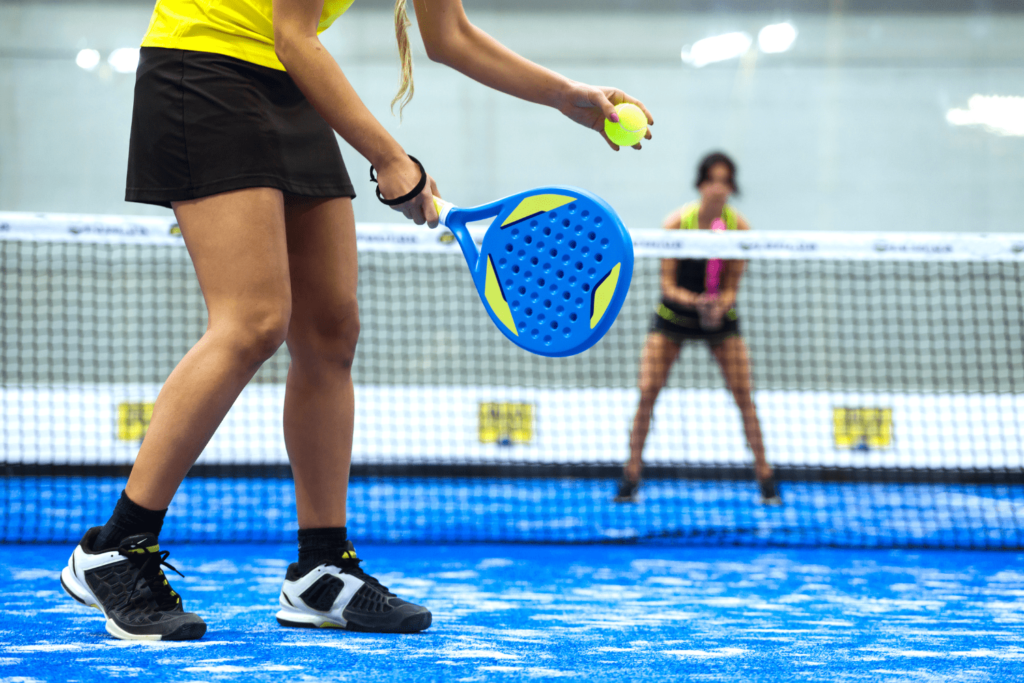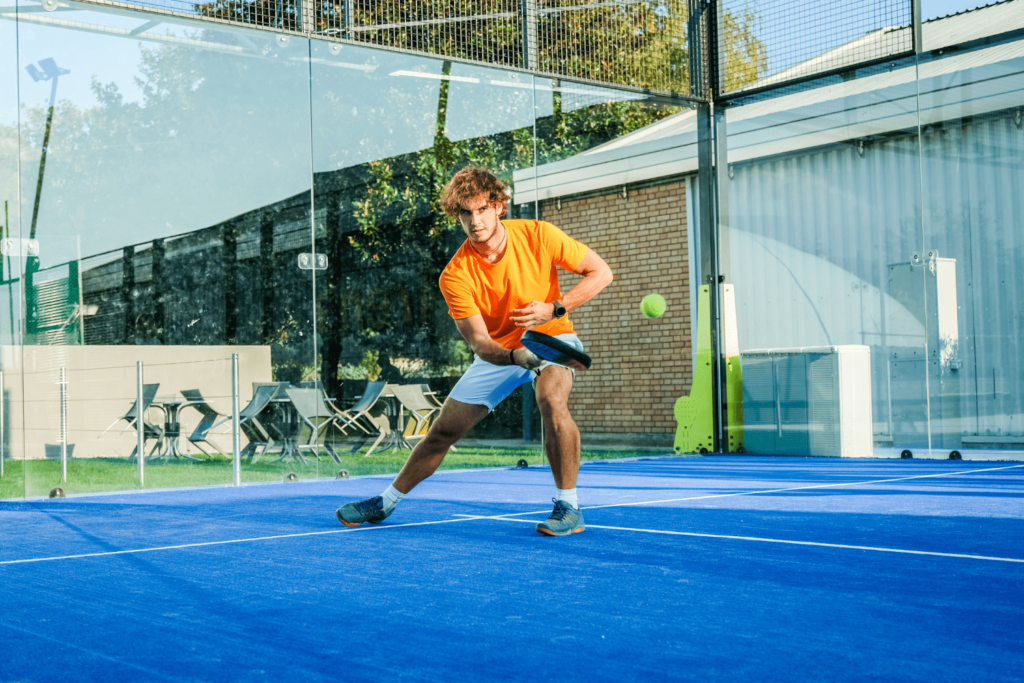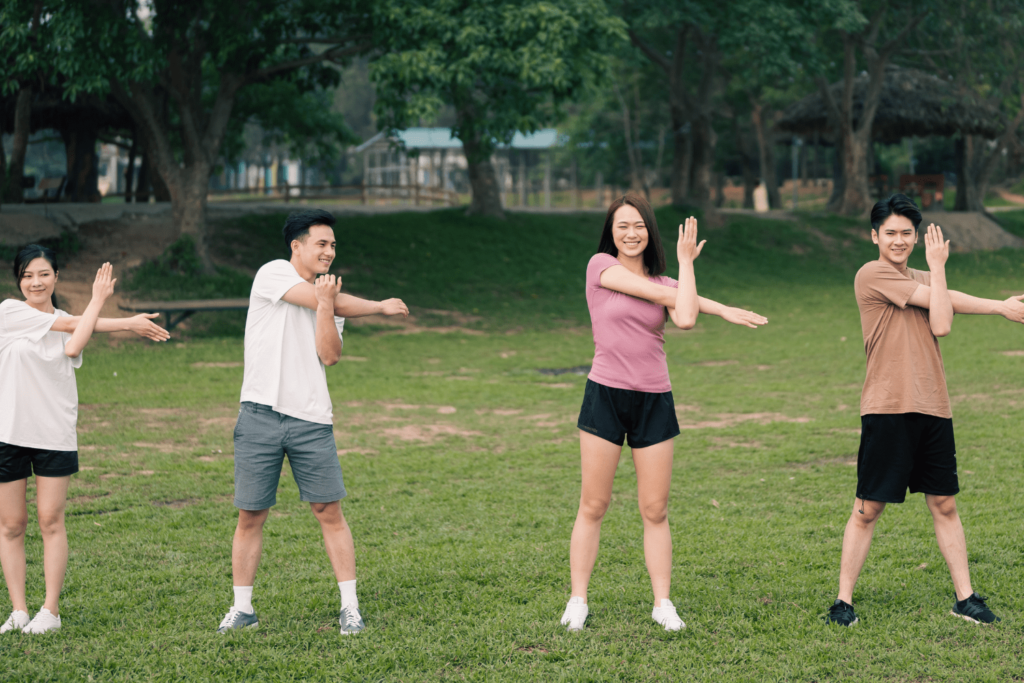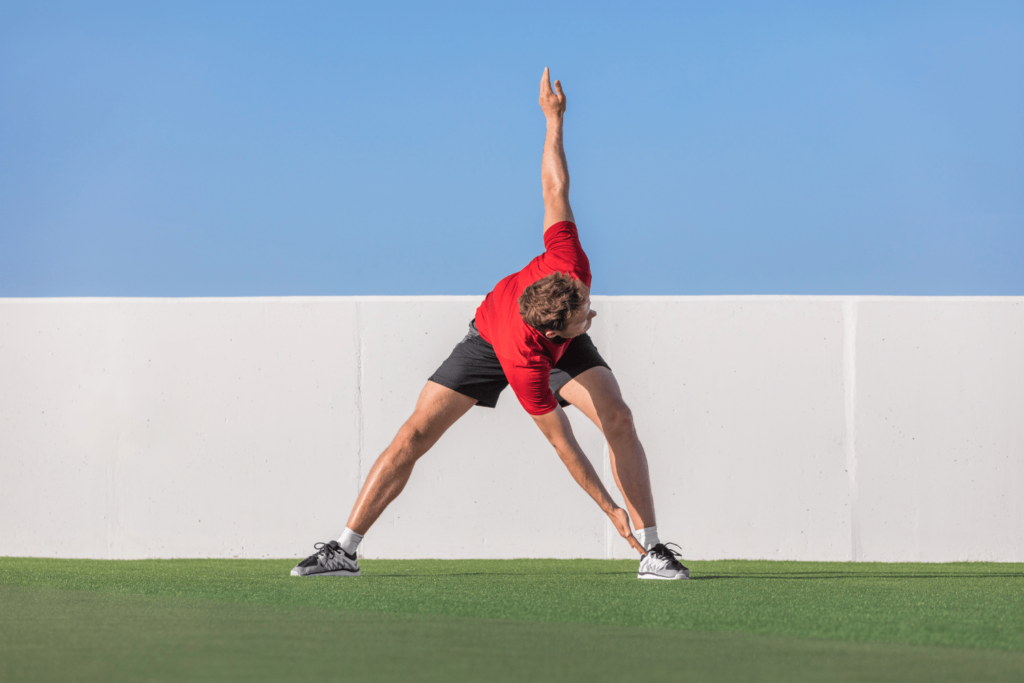Padel a dynamic, fast-paced mix of tennis and squash is quickly becoming a favourite for fitness enthusiasts and casual players alike. The sport’s appeal lies in its accessibility and social nature, making it perfect for anyone seeking a high-energy workout. However, padel can also be physically demanding, and players who jump in too quickly may face injuries that could sideline their fun.



In padel, quick lateral and forward movements define the game. Without solid footwork, not only is your play affected, but you’re also at greater risk for ankle sprains, knee twists, and other lower-body injuries. Many players rely on their natural movement, but deliberate, focused footwork can change the game entirely. Start by incorporating agility ladder drills, shuttle runs, and side-to-side step exercises to train your muscles to handle swift direction changes safely.
By improving your footwork, you’ll be faster and more stable, allowing you to cover the court without overextending or losing balance. This preparation translates into more efficient and graceful movement that makes your gameplay look effortless while protecting your joints from strain.
While upper body strength is essential for powerful strokes, don’t overlook your legs and core. Strong legs give you a powerful base for moving around the court, and a well-conditioned core stabilises your entire body, making each stroke more effective and controlled. For players serious about padel performance, consider strength exercises that target all major muscle groups—squats, lunges, deadlifts, and core drills like Russian twists and planks.
By building strength in key areas, you’ll not only improve your power on the court but also reduce your susceptibility to common overuse injuries. Plus, added strength gives you greater endurance, helping you play longer and with more control.



Padel’s unique grip technique can put strain on your wrist and forearm, especially if you’re gripping too tightly or incorrectly. Many padel-related injuries stem from poor grip technique, so learning the right way to hold the racket can save you a lot of pain in the long run.
Ensure that your racket handle is the right size and comfort level for your hand. Practice maintaining a relaxed, flexible grip that allows you to control the racket without overly tightening your hand, which can lead to repetitive strain injuries like tennis elbow. Regularly stretching and strengthening your wrist and forearm muscles can also improve flexibility, helping you avoid soreness and play with ease.
Padel’s intensity often results in players pushing themselves past fatigue, which can compromise form and increase the likelihood of injury. It’s tempting to jump back into the game after a tough workout, but prioritising rest days is critical. Recovery time allows your muscles to repair, preventing strain and fatigue-based injuries from interrupting your game.
A good recovery routine includes gentle stretching, hydration, and perhaps even a massage to release any lingering tension. Additionally, proper sleep is vital for muscle repair—aim to get at least 7-8 hours per night to maximise your body’s recovery capabilities. By giving your body the care it needs, you’ll come back stronger, fresher, and ready to perform at your peak.
Every padel game involves sudden bursts of movement, and a solid warm-up is key to preparing your body for these dynamic demands. Warm-ups for padel aren’t just about stretching; they should include light cardio and active movement that mimic in-game actions. Begin with a few minutes of brisk walking or jogging to get your blood flowing. Follow this up with dynamic stretches like leg swings, lunges, and arm circles to loosen your muscles and joints.
Integrating a mini agility session before you hit the court can help your muscles adjust to the fast-paced, multi-directional movements you’ll make during the game. Properly warming up not only boosts performance but significantly reduces the risk of strains, especially in your legs and shoulders.
Padel is as much a mental game as a physical one. Good anticipation and fast decision-making are essential, not just for performance but also to avoid awkward movements that could lead to injury. By staying mentally sharp and alert on the court, you’ll position yourself better, reducing the need for frantic, last-second adjustments that can cause strain.
Practise visualising game scenarios and imagining your movements. Developing mental agility improves your reaction time, helping you read your opponent’s moves and adjust your position early. It’s this mental preparation that often separates skilled players from novices, allowing you to move more efficiently and avoid unnecessary, injury-causing stumbles.
While padel is fantastic for cardio and agility, cross-training provides a balanced approach to fitness that padel alone can’t offer. Try incorporating low-impact activities like swimming, cycling, or yoga into your fitness routine. Swimming, for instance, is an excellent way to strengthen the upper body and core without putting strain on joints. Yoga helps build flexibility and mental focus while reducing tension.
Cross-training gives your body a break from repetitive padel movements while enhancing overall fitness, balance, and stamina. By varying your workouts, you’ll be better prepared for the demands of padel and less prone to overuse injuries.
Staying hydrated and fueling your body properly may seem basic, but it has a huge impact on how you feel and play. Dehydration can cause muscle cramps and fatigue, so be sure to drink water consistently, especially if you’re playing outdoors in warm conditions. During your game, try to keep a water bottle handy and take small sips whenever you can.
On the nutrition front, eating a balanced meal with protein, healthy fats, and complex carbs before your game provides sustained energy without weighing you down. Afterward, refuel with a protein-rich snack to help muscle recovery and prepare for the next game. When you’re well-fueled and hydrated, you’ll not only play better but also reduce the risk of fatigue-related injuries.
Even with the best precautions, injuries can sometimes happen. One of the smartest ways to stay on top of potential issues is to get regular check-ups with a physiotherapist, sports doctor, or trainer who understands padel. They can identify any muscle imbalances, postural issues, or movement patterns that may predispose you to injury.
Early detection of any physical weakness or imbalance can lead to a quicker, more targeted intervention, helping you stay fit and injury-free for the long term. Remember, proactive care is always better than reactive treatment.
Playing padel injury-free is a blend of technique, preparation, and self-care. With the right approach, you can not only maximize your time on the court but also elevate your performance in every game. These tips go beyond standard fitness advice, focusing on sustainable, injury-prevention habits that keep your body strong, flexible, and resilient. As you continue to build your padel skills, remember that staying healthy and injury-free is a win in itself.
Elevate your performance with Apex Sports Clinic! Schedule an appointment today for personalized, expert care in optimizing your athletic potential.


